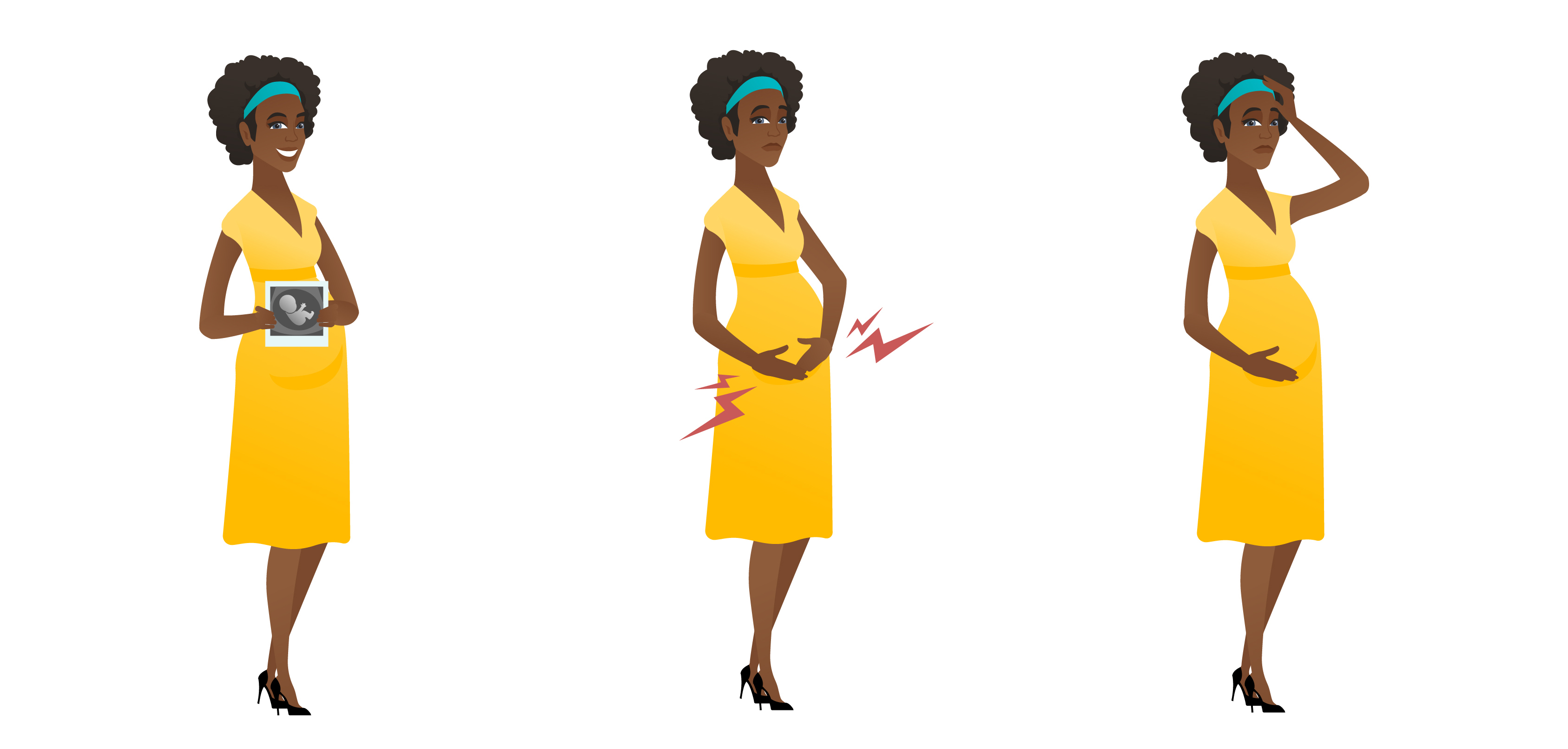Braxton Hicks contractions are painless sporadic uterine contractions that start about 6 weeks into your pregnancy, although you won’t be able to feel them that early. They get their name from John Braxton Hicks, an English doctor who first described them in 1872.
Who gets them?
Braxton Hicks contractions are normal in all pregnancies, but you probably won’t start to notice them until sometime after mid-pregnancy, and some women don’t notice them at all.
As your pregnancy progresses, Braxton Hicks contractions tend to come somewhat more often, but until you get to your last few weeks, they’ll probably remain infrequent, irregular, and essentially painless.
When should I call the doctor?
In some cases Braxton Hicks contractions are hard to distinguish from early signs of pre-term labour. Don’t try to make the diagnosis yourself. If you haven’t hit 37 weeks yet and you’re having more than four contractions in an hour, or you have any other signs of preterm labour, play it safe and call your doctor immediately.
The difference between Braxton Hicks and true labour contractions
In the days or weeks before labour, Braxton Hicks contractions may become rhythmic, relatively close together, and even painful, possibly fooling you into thinking you’re in labour. But unlike true labour, during this so-called false labour the contractions don’t grow consistently longer, stronger, and closer together.
Pre-labour contractions
By the time you’re within a couple of weeks of your due date, your cervix has likely begun to gradually soften up in preparation for labour. Your contractions may intensify and come more frequently, and they may cause some discomfort. Unlike the earlier painless and sporadic Braxton Hicks contractions, which caused no obvious cervical changes, these contractions may help your cervix thin out and maybe even dilate a little. This period is sometimes referred to as pre-labour.
When Braxton Hicks contractions become uncomfortable
If you’re still within a few weeks of your due date, try these measures:
- Take a warm bath, it will help your body relax
- Drink a glass or two of water, sometime these contractions can be brought on by dehydration.
- Change your position or activity. Sometimes resting eases contractions, at other times walking can help to provide relief. True labour contractions, on the other hand, will persist and progress regardless of what you do.
- Use this opportunity to practice relaxation exercises or slow, deep breathing. This won’t stop the Braxton Hicks contractions, but it may help you cope with the discomfort.
Signs to watch out for
Call your doctor right away if you haven’t reached 37 weeks and your contractions are becoming more frequent, rhythmic, or painful, or if you have any of these possible signs of preterm labour:
- Abdominal pain, menstrual-like cramping, or more than four contractions in one hour (even if they don’t hurt)
- Any vaginal bleeding or spotting, or an increase in vaginal discharge or a change in the type of discharge — if it becomes watery, with mucus, pink or blood-tinged
- More pressure in the pelvic area -a feeling that your baby’s pushing down
- Low back pain, especially dull or rhythmic pain, especially if you didn’t previously have back pain
If you’re past 37 weeks, there’s no need to call your doctor or midwife just for contractions until they last about 60 seconds each and are five minutes apart and continue like this for an hour.

